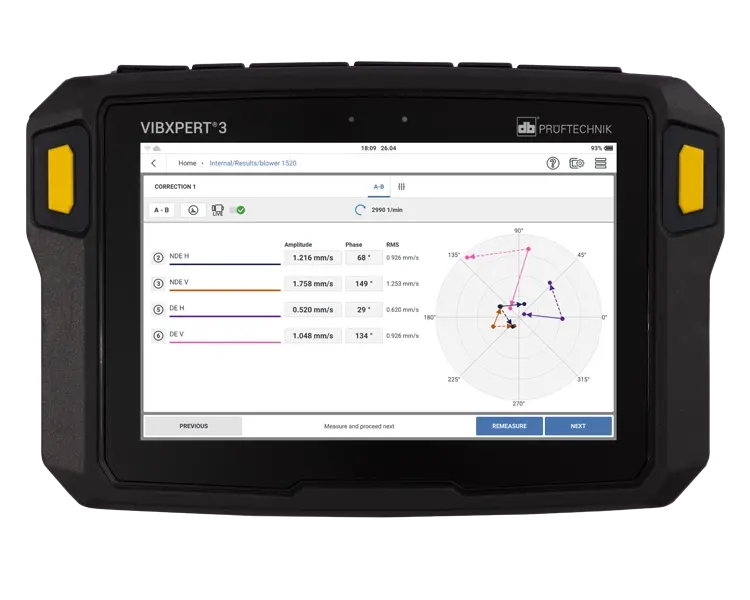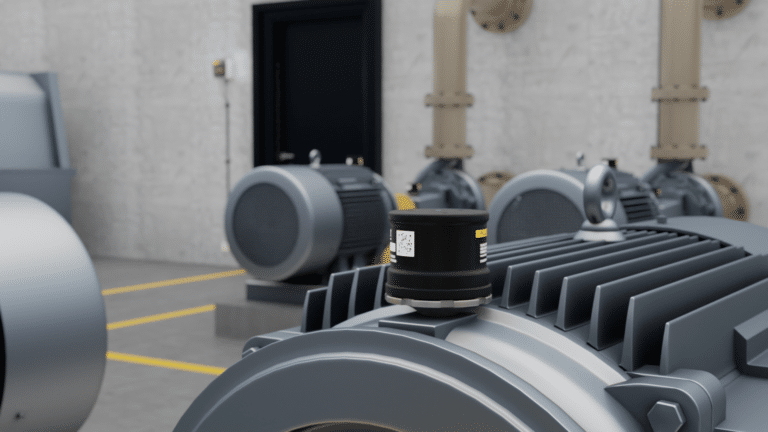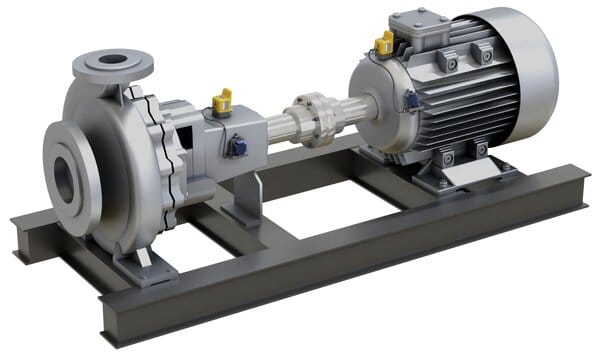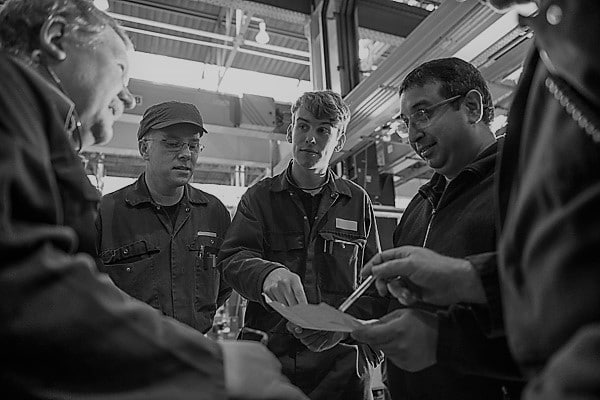Field technicians know that even a slight machine unbalance can lead to inefficiencies, breakdowns, and safety hazards. However, achieving precise balance in rotating machinery like motors, pumps, and generators can be challenging without the right tools.
That’s where advanced balancing solutions come into play. The VibXpert 3 Balancer makes it a simple and straightforward matter to get the accurate and reliable results you need. With advanced features that provide real-time data and actionable insights, new and experienced technicians alike can easily identify unbalance, make precise corrections, and get machinery back up and running quickly and accurately.
In this article, you’ll see how this next-generation balancing tool makes your job easier and your rotating assets more reliable.
- What’s the fuss about unbalance?
- Common causes of unbalance in rotating machinery
- Types of unbalance
- How easy is it to correct unbalance?
- Field balancing with the VibXpert 3
- Main takeaways
What’s the Fuss About Unbalance?
The importance of balancing rotating machinery cannot be overstated. Up to 60% of machine failures are due to misalignment and unbalance, making it a significant cause of asset breakdowns.
While initially subtle, unbalance gradually causes damage to a machine if left uncorrected. This leads to increased vibration levels, which cause excess friction and heat, ultimately resulting in premature wear on bearings, shafts, belts, and other components.
As unbalance worsens, an asset can consume more energy, run less efficiently, and slow down production. It can suddenly and unexpectedly spiral, causing catastrophic asset failures. Entire operations can shut down as a result.
This is why letting a machine run unbalanced is a gamble you don’t want to take.
Common Causes of Unbalance
Several factors contribute to unbalance, including:
- Eccentric rotors and hubs: Manufacturing defects can result in parts that are not perfectly symmetrical, leading to unbalance.
- Bad machining of parts: Inaccurate machining can create uneven weight distribution.
- Cracked plates and rotors: Structural damage to components can cause significant unbalance.
- Rotor warping: Extreme temperature variations or corrosive environments can warp rotors, affecting their balance.
- Dirt and moisture buildup: Accumulation of debris on rotors can lead to uneven weight distribution.
When detecting unbalance, it’s also important to know what type of unbalance you’re dealing with. This information can be the first step to fixing the problem.
Types of Unbalance
Unbalance in rotating machinery typically falls into three categories:
- Static unbalance: This type of unbalance occurs when a rotating mass is unbalanced at its center of gravity. In other words, there is a single heavy spot on the rotor, which is visible when the machine is stationary, as the rotor naturally settles with the heavy spot at the bottom. To diagnose static unbalance, a measurement needs to be taken with a balancing tool due to the force vector of the machine rotor.
- Couple unbalance: This happens when the axis through an object’s center of gravity is out of balance with the rotational axis. Couple unbalance occurs when you have two different heavy points on a rotor, produced by two equal masses located 180 degrees apart along the shaft axis. Unlike static unbalance, couple unbalance is only visible when the machine is running. When you shut down a machine, you won’t necessarily find a heavy spot because the weights balance each other out.
- Dynamic unbalance: This is a combination of static and couple unbalances. You will have two weights that are not 180 degrees apart from each other. Correcting this type of unbalance requires a multiplane balance, involving phase measurements and adjustments to balance weights at various points along the rotor.
How Easy is it to Correct Unbalance?
Clearly, identifying and correcting unbalance can be challenging without the right support.
Many technicians today lack the extensive training needed to address rotational unbalance issues, and historically, capturing accurate measurements in the field has been tough. It doesn’t help that the complexity of modern machinery can make isolating and diagnosing defects even more difficult.
Without quality tools, frequent machine breakdowns can become the status quo.
Field Balancing with the VibXpert 3

The VibXpert 3 offers a comprehensive solution for addressing challenges with balancing, bringing several key advantages to the field:
- Reduced expertise constraints: With an industry-wide shortage of experts, the VibXpert 3’s intuitive interface and automated features allow less experienced technicians to perform accurate balancing with confidence. For instance, VibXpert 3 comes with preloaded templates for common machine types to speed up setup times and provide consistency. These machine templates have a large number of common balance requirement machines which can be edited to be more specific to your application.
- Your team will work faster and safer: The VibXpert 3 also reduces the time needed for a balancing job; With it, you’ll need fewer trim runs to get your balance right which means bothering the electrician less, fewer trips up and down the stairs, and getting the job done faster.
To this end, setup and measurement with the VibXpert 3 is far quicker than legacy balancers, which typically require technicians to laboriously record measurements at multiple points on the machine. VibXpert 3 takes just minutes to set up and uses six synchronous channels to provide 360-degree insights into machine health.
Its post-processing capability is also extremely useful as it allows you to store raw sensor signal. This means that if you set up a task incorrectly or you make a mistake along the way, you can hit the back button to go back a step. In other words, this simple but valuable ability allows technicians to backtrack and correct errors without starting from scratch, saving time and reducing frustration.
Better efficiency also means improved safety for your team. For example, when working on large rotors or squirrel cage fans, fewer adjustments mean less exposure to potential hazards, such as the risk of the fan wheel starting to turn unexpectedly. Reducing the number of times technicians need to interact with the machinery directly lowers the risk of accidents. - It’s built for tough environments: The VibXpert 3 is built to withstand the harsh environments often encountered in industrial settings. Its robust design provides durability even under challenging conditions. This resilience means maintenance teams can rely on the VibXpert 3 to perform consistently.
- Data-driven reporting made easy: If you don’t document it, it didn’t happen, right? VibXpert 3’s document and report feature make it easy to keep thorough records of machine conditions. These can be downloaded or emailed, and the VibXpert 3 connects to your computer via a USB-C cable. Maintenance and reliability teams can then use these reports to make data-driven decisions to prolong asset health and reduce maintenance costs. Overall, the VibXpert 3 takes the guesswork out of balancing machinery. It provides quick, reliable diagnostics in the field, leading to more efficient maintenance operations.
The Takeaway
Keeping rotating machinery balanced shouldn’t be the balancing act it is today.
The VibXpert 3 simplifies this complex task, making it straightforward and quick for technicians of all levels. With its advanced features and durable design, you and your team can work with confidence, knowing your machinery will run smoothly and efficiently.






